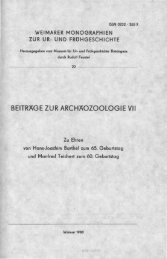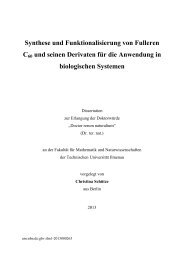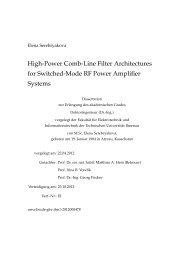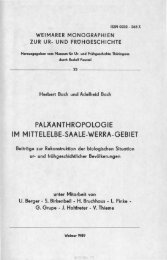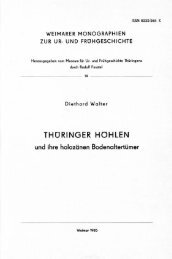Dissertation
Dissertation
Dissertation
Create successful ePaper yourself
Turn your PDF publications into a flip-book with our unique Google optimized e-Paper software.
|1.10 Intramolecular Photoredoxcatalysts|<br />
(1) intrinsic and intercomponent stability toward thermal, photo- and electrochemical<br />
decomposition and reaction products or intermediates<br />
(2) reversible redox behavior<br />
(3) distance control of the interlinked metal centers<br />
(4) suitable electronic coupling between the components<br />
(5) suitable intracomponent HOMO and LUMO energies (redox-, ground state- and<br />
excited state potentials)<br />
(6) unidirectional charge separation or long lifetimes of the charge-separated state<br />
(7) sufficiently small energy gap between relevant excited/redox states to guarantee for<br />
(6), while conserving maximal redox activity<br />
(8) high energy/potential of the reactive excited/redox state<br />
(9) good kinetic factors for inner sphere electron transfer reactions for:<br />
(10) electron storage capacity<br />
(11) high efficiency of population of the reactive (excited) redox state at the catalyst site<br />
Nevertheless, it is difficult to predict the properties of a single component, the bridging ligand in<br />
particular, without considering the other components on the supramolecular structure.<br />
The series of [Ru(bpy) 2 (tpphz)]-type complexes (tpphz = tetrapyrido[3,2-a:2’,3’-c:3”,2”-h:2”’,3”’-<br />
j]phenazine) in figure 31 nicely exemplifies the difficult interdependences and interactions in a<br />
supramolecule.<br />
Interestingly, the bridging ligand tpphz exhibits two types of empty π*-orbitals in close energetic<br />
proximity, the LUMO bpy , which is mainly localized on the bipyridine like moieties and the<br />
LUMO pz which is localized on the pyrazine moiety of the molecule. The orbital energies of these<br />
LUMOs will be shifted in dependence of the oxidation state and the type of metal fragments,<br />
coordinated to it. As a result of that, differently localized LUMO orbitals will be involved in the<br />
charge transfer processes and charge separated states between the attached metals and the bridging<br />
ligand which will be indicated by MLCT bpy and MLCT pz in the following passages.<br />
The mononuclear complex [Ru(phen) 2<br />
(tpphz)] 2+ (Ru(tpphz), phen = 1,10-phenanthroline) shows<br />
the typical 1 MLCT bpy -absorption between 400 and 500 nm and MLCT bpy -emission from its<br />
LUMO bpy (λ max = 625 nm, τ = 1.25 ms, Φ = 0.07, depicted in orange). The electron-transfer process<br />
after excitation of the molecule, leading to deactivation of MLCT bpy and population of MLCT pz<br />
|44|



